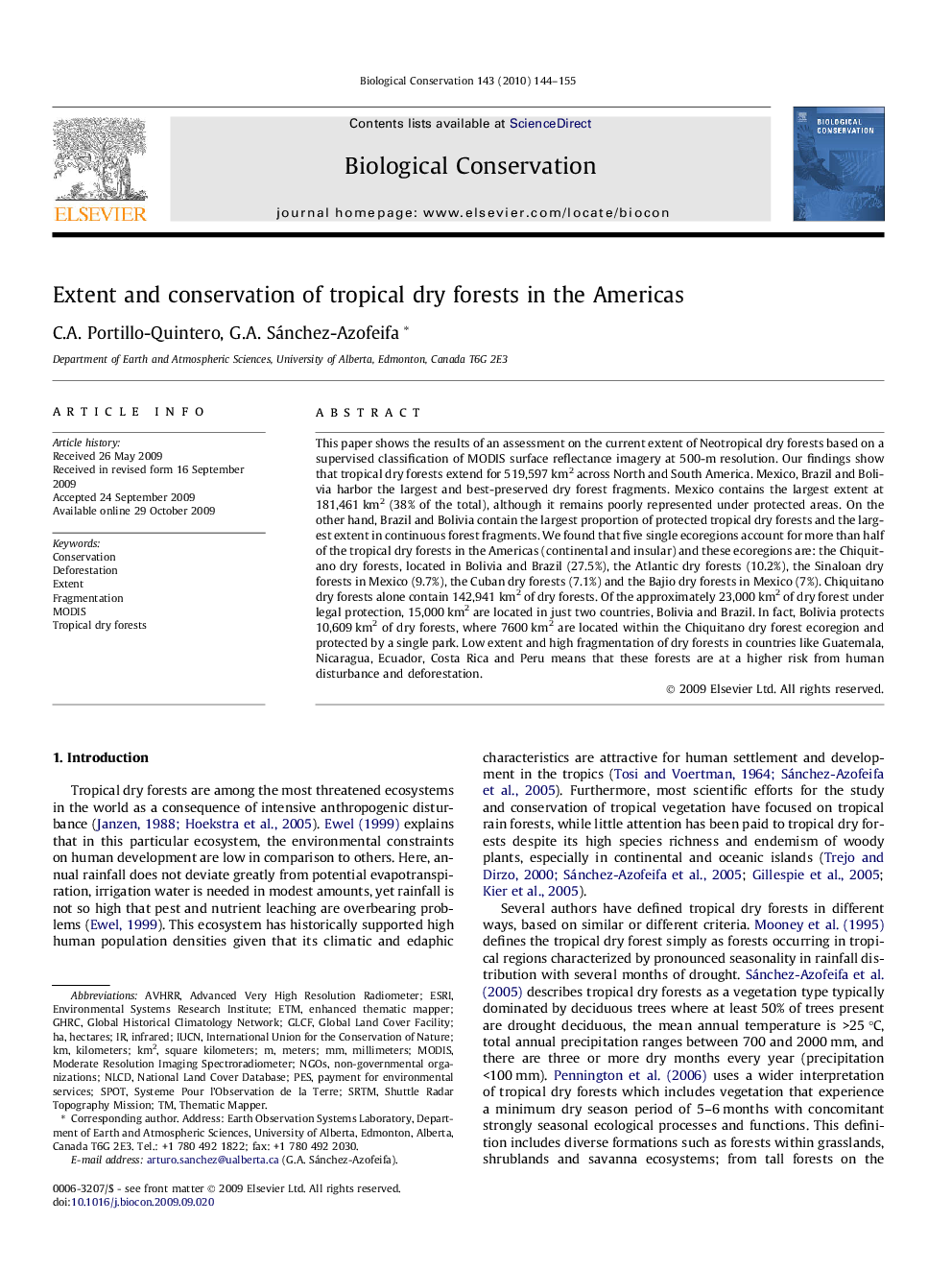| Article ID | Journal | Published Year | Pages | File Type |
|---|---|---|---|---|
| 4386064 | Biological Conservation | 2010 | 12 Pages |
This paper shows the results of an assessment on the current extent of Neotropical dry forests based on a supervised classification of MODIS surface reflectance imagery at 500-m resolution. Our findings show that tropical dry forests extend for 519,597 km2 across North and South America. Mexico, Brazil and Bolivia harbor the largest and best-preserved dry forest fragments. Mexico contains the largest extent at 181,461 km2 (38% of the total), although it remains poorly represented under protected areas. On the other hand, Brazil and Bolivia contain the largest proportion of protected tropical dry forests and the largest extent in continuous forest fragments. We found that five single ecoregions account for more than half of the tropical dry forests in the Americas (continental and insular) and these ecoregions are: the Chiquitano dry forests, located in Bolivia and Brazil (27.5%), the Atlantic dry forests (10.2%), the Sinaloan dry forests in Mexico (9.7%), the Cuban dry forests (7.1%) and the Bajio dry forests in Mexico (7%). Chiquitano dry forests alone contain 142,941 km2 of dry forests. Of the approximately 23,000 km2 of dry forest under legal protection, 15,000 km2 are located in just two countries, Bolivia and Brazil. In fact, Bolivia protects 10,609 km2 of dry forests, where 7600 km2 are located within the Chiquitano dry forest ecoregion and protected by a single park. Low extent and high fragmentation of dry forests in countries like Guatemala, Nicaragua, Ecuador, Costa Rica and Peru means that these forests are at a higher risk from human disturbance and deforestation.
